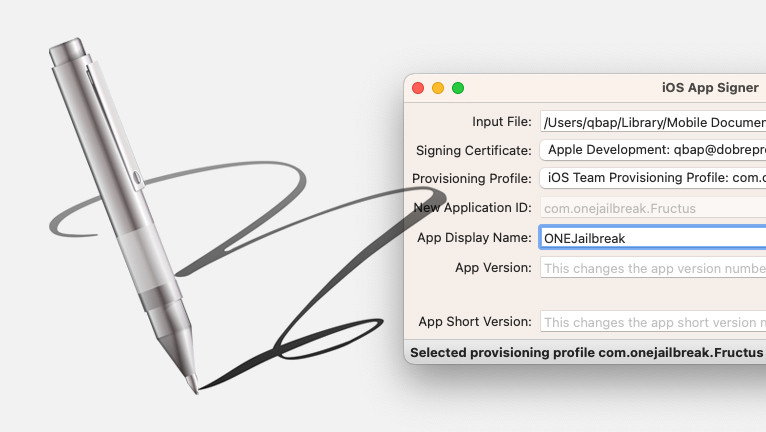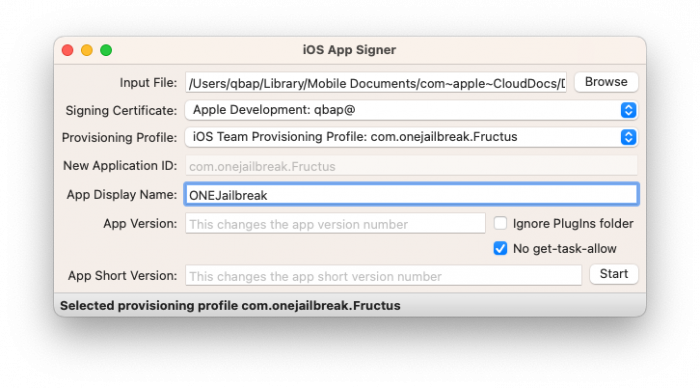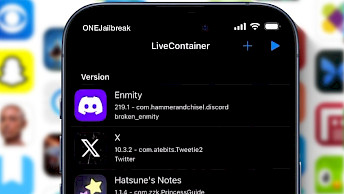iOS App Signer

There are several IPA signing tools available that allow you to sign and install apps on iOS devices. One such tool is iOS App Signer, which is designed specifically for developers to easily sign and share signed IPA files. Also works with free developer accounts.
Download iOS App Signer
What is iOS App Signer?
iOS App Signer enables you to (re)sign apps and bundle them into IPA files that can be installed on any iOS device, provided you have a paid developer account or a signing certificate and provisioning profile. The app supports a variety of input types, such as IPA, or DEB.
To install IPA files on an iOS device, you first need a provisioning profile and a signing certificate, which you can obtain by creating a new Xcode project. Then, using the iOS App Signer on a Mac, you can easily sign and bundle your app into an IPA package for iOS.
However, the developer is experimenting with a cloud-based version of iOS App Signer that eliminates the need for a Mac or any computer. This service, which requires a paid registration to work, is currently available only with the Platinum option from UDID Registrations. By using this service, you can sign your apps online and install them on your iOS devices without a Mac.

Alternatively, you can purchase the Silver or Gold package from UDID Registrations to obtain a signing certificate and provisioning profile that you can use with the iOS App Signer on a Mac. This way, you can sign and bundle your app into an IPA file and install it on your iOS device.
iOS App Signer is an open-source project that was released under the GPL-3.0 license. The source code for the app was written in several programming languages, including Mercury, Swift, Objective-C, and C. You can find the source code on the app's GitHub repository.
In order to use iOS App Signer, you need to have Xcode installed. However, it's worth noting that the app has been successfully tested and run on the latest version of macOS, which is macOS 13 Ventura. Installed IPA files with iOS App Signer are not permanent. Code signing expires when either the provisioning file or signing certificate expires. For free accounts this is 7 days, paid accounts get 1 year. Fortunately, you can re-sign IPA the same way.
Optionally, you can specify a new app ID, app display name, app version, and app short version.
If you prefer a simpler method for signing IPA files, you can use Sideloadly IPA Installer released for macOS and Windows. Alternatively, if you don't have access to a computer, there are on-device IPA signing tools such as Esign, Bullfrog Assistant, or SideStore that you can use.
Configuration
To sign IPA files using iOS App Signer, you must first obtain a provisioning profile and signing certificate. You can create these by starting a new project in Xcode.
Note: iOS App Signer supports IPA, DEB, App, and xcarchive inputs.
Open Xcode and create a new iOS app by typing in a name and identifier.
Xcode may complain about the provisioning profile. If so, click “Fix Issue”.
You may be prompted to sign in to an Apple ID. If so, click “Add”.
Select your profile and click “Choose”.
Open iOS App Signer and select the IPA file, your signing certificate, and provisioning profile.
Click “Start” and select an output filename.
To install the IPA file on your device, go back to Xcode, select the “Window” menu, and click “Devices”.
Click the “+” button and select the file generated by iOS App Signer.
What's new
- Updated iOS App Signer to version 1.14.
- Added Apple Silicon support.
- Added option to skip get-task-allow entitlement.
- Sort certificates.
- Use NSDictionary to implement getPlistKey.
- Fix wildcard application-identifier in entitlement.
- Add an error log when code sign error occurs.
- Add edit menu to allow use of copy / cut / paste / select all shortcuts.





